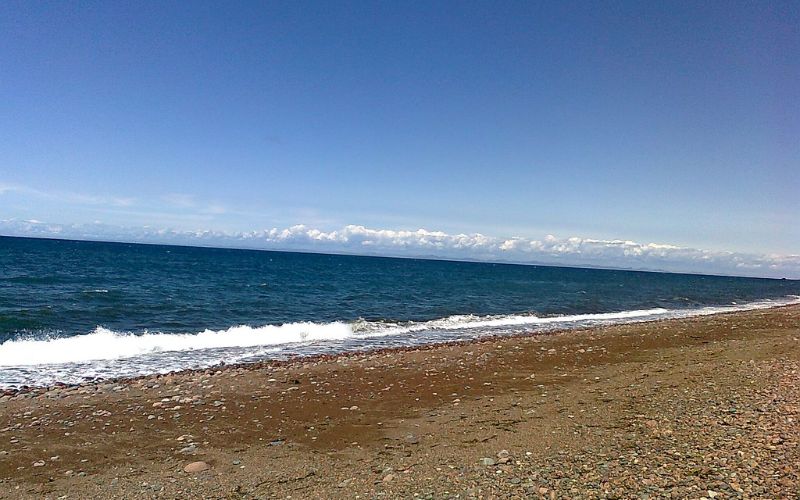The party's over: See our slideshow
The Economist magazine has pronounced Ireland dead. The official diagnosis cites injuries sustained as the result of a collision with a runaway construction boom. But the results are still the same; the magazine reckons the country is dead.
The Irish Government is planning an emergency intervention on April 7, but most believe the surgery is too little and way too late.
The 10-year party’s over. The Irish economy is kaput. The only thing left to do is pick up the pieces.
The Economist points to the empty office buildings in Dublin as proof and claims that the only cranes moving are the ones over the new football stadium at Lansdowne Road.
In fact, Ireland is so quiet that the St Patrick’s Day festivities were low-key as the country adjusted to a recession which The Economist says is the worst in Europe.
The magazine highlights two key indicators; The economy shrank by 2.5 percent in 2008 and is expected to shrink another 6.5 percent this year.
Unemployment has jumped from 5 percent to 10.4 percent raising fears of the specter of the early 1980s when unemployment soared as high as 17 percent.
Meanwhile, the banks have been walloped by the collapse of the property market. They might have avoided the toxic securities which crashed the U.S. banking system but the overpriced construction loans could do them in.
The crisis is so bad that the Government is carrying out emergency surgery on April 7 with a rush Budget.
This rapid implosion in the Irish economy has focused attention on the insane housing boom. And let’s be honest, it looked psychotic from this side of the Atlantic.
But, the magazine claims that the housing collapse hides the fact that real gains were made in Ireland.
They divide the boom into two parts; one phase built the foundations; the other phase put so much stress on the system that it was doomed to fail.
Phase one
A youthful, English-speaking, cheap labor force ($14 an hour against $28 an hour in Germany in 1998) was a powerful magnet for direct foreign investment (DFI - think Dell and Xerox). The mostly U.S. companies poured in money and know-how and the Government gave the foreign companies, grants, a low tax rate and access to the EU market.
Phase two
Mortgage interest rates plummeted from double-digits to less than 5 percent. This cheap credit kicked off a massive boom in building and retailing. Rumors that Irish streets were paved with gold attracted migrants from new EU member states. This all helped to maintain the illusion of a boom. But as one Irish economist notes, the Celtic Tiger had already left on the tide.
When the tide went out, it revealed a sodden mess of unsold houses and bad debt. But more importantly, the high costs of housing had driven wages and spending so high that the whole economy rested on a flimsy house of cards.
As the recessionary winds started to blow across the Atlantic, the entire structure collapsed.
Ireland’s cheap labor costs, which had fuelled the early boom had risen so high that Ireland was no longer attractive to DFI. The magazine cited a study saying that Irish labor costs had rocketed by a third between 1999 and 2007, far more than anywhere else in the Euro area.
Another sign that Ireland had become too pricey could be seen in the 1990s budget surplus which has turned into a roaring deficit.
The Economist also points to a big rise in public-sector wages after a 2002 review. The average pay is now about €46,000 (approx $34,500) compared to the average industrial wage of about €31,000 (approx $23,200).
Cuts in income tax left public finances too dependent on windfall revenues from VAT on new homes, capital-gains tax and stamp duty. Those revenues dried up swiftly once house prices and sales slumped, pushing the budget into deep deficit.
If you want some more bad news, The Economist has plenty. Investors are staying away from Ireland in the international bond market. The 10-year yield on Irish Government bonds is 6 percent, nearly twice that of Germany’s 3.2 percent. The odds show how reliable investors think Ireland is.
But, back to the banks. The Economist says even the guaranteed banks are bound to hold bad assets. It cites Kevin Daly at Goldman Sachs saying total losses could be $27 billion, or 10% of GDP - mostly from bad loans to property companies.
The April 7 mini-budget is the fourth fiscal package in 12 months. The Government has already cut public-sector pay by about 7.5 percent and the axes were not put away. Higher income taxes are almost guaranteed. Capital projects will be put on the back burner and more spending cuts art on the way.
Wages are clearly the weak link. Ireland is stuck between lay-offs or wage cuts – or both. A new survey shows 90 percent of firms are slashing or reducing pay across the board while 33 percent are cutting executive salaries by 10% or more.
It remains to be seen if Ireland can nickel-and-dime itself out of bankruptcy. Irish households are heavily indebted from the housing boom. The workforce has priced itself out of the global market. Thousands upon thousands of Irish people have spent small fortunes on houses they can no longer afford to maintain. Many are underwater and foreclosures are mounting.
You don’t need to be The Economist to know that the Irish economy, for all intents and purposes, is dead.




Comments